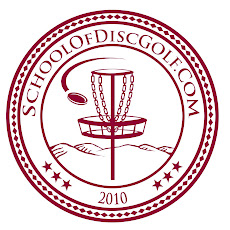
I just checked out PDGA's homepage to check in on the coverage of this year's coverage of the World Championships in Indiana. Since we're hosting the event next year in Santa Cruz/Monterey, it seemed like a sensible idea.
Anyway, seeing the pictures of the courses being played in Indiana, I'm reminded of one of the numerous aspects of disc golf - in my experience, based in Northern California - I've always thought sets disc golf apart from its ancient Scottish ancestor (ball golf). Namely, nature. Wilderness. The Wild.
Most people unfamiliar with our sport picture someone in a wide open grassy area throwing a Frisbee, walking to it, picking it up, and throwing it again. This is for two reasons: One, they think golf, and they picture a typical golf course, with landscaped terrain long ago conquered by man. Second, most people that accidentally witness our sport do so at a course that is situated in a park setting. They see people throwing discs that soar into the empty sky then land harmlessly on flat, grassy turf. Again, and again, and again.
When disc golf is played in such a setting, it's still enjoyable, and it's pleasant. But since controlling a thrown disc is easier to master than controlling a small dimpled ball by hitting with various clubs, the challenge after awhile becomes somewhat bland. This distinction is particularly apparent to me as I learned the game on Nor Cal courses which are mostly set in undeveloped open spaces. In such locations, the sport is:
- More challenging to score well, with rougher rough, little or no soft grass, more trees, and drastic elevation changes
- Much more strenuous physical and mental exercise
- Showcased as a different - even is some ways superior - version of golf, as opposed to a weak imitation
When it's played in a park setting, disc golf simply comes off as a cheap imitation of a great sport, rather than the next evolutionary step of a great sport. When it's played in 'the wild' and players are forced to tromp through overgrowth and get creative to navigate wooded fairways, the uniqueness of disc golf comes through. For comparison, think about why mountain biking appeals to people that never would have shown an interest in riding a bike on flat concrete roads for entertainment and exercise.





